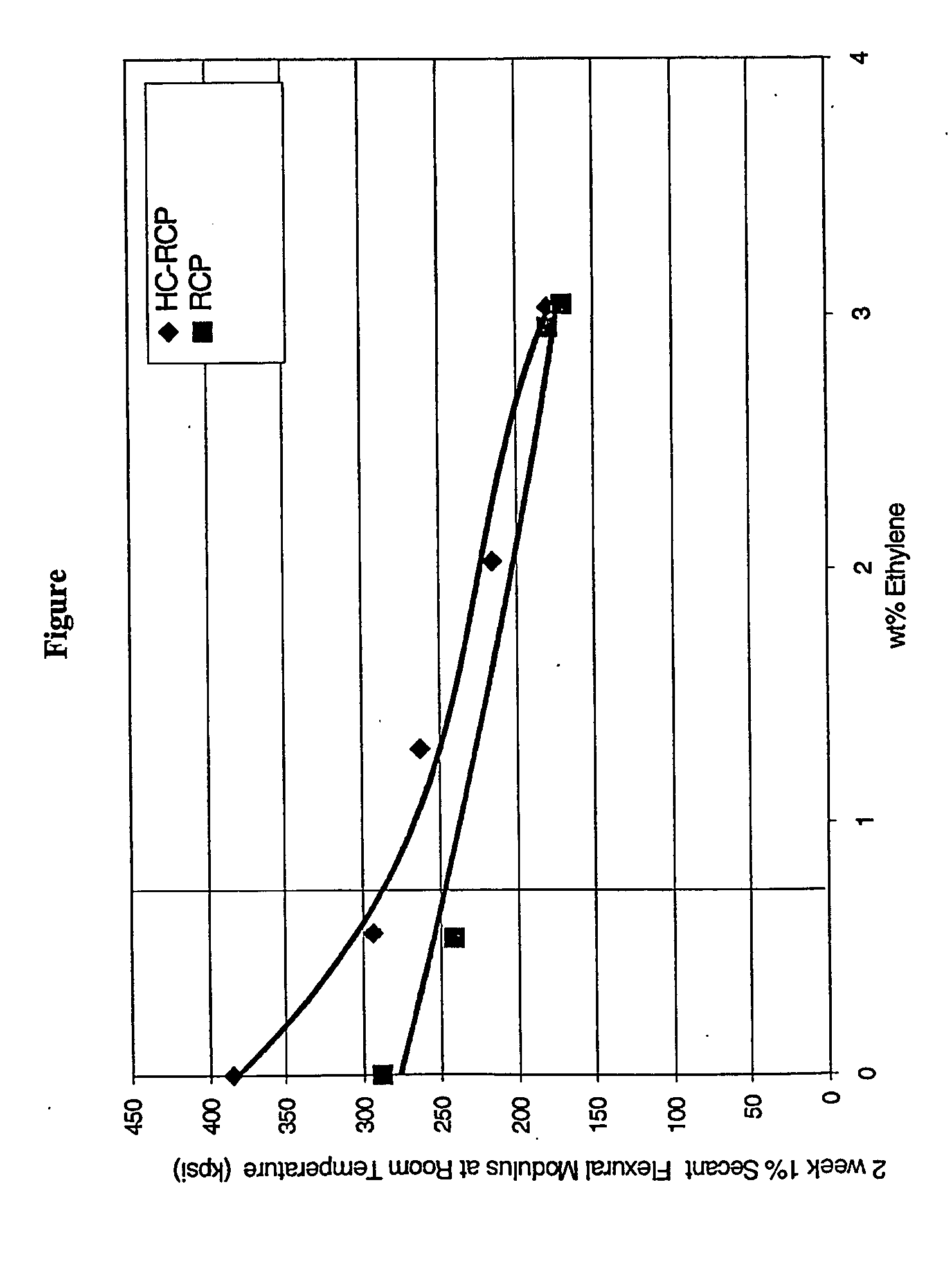Highly crystalline polypropylene with low xylene solubles
a polypropylene, high-crystalline technology, applied in the direction of granular delivery, pharmaceutical delivery mechanism, medical preparations, etc., can solve the problems of unacceptably high xylene soluble, processing and environmental problems, and unacceptable high percentage of high molecular fraction material for lower melt flow rate polymers, etc., to achieve excellent balance, enhance clarity, and high melt strength
- Summary
- Abstract
- Description
- Claims
- Application Information
AI Technical Summary
Benefits of technology
Problems solved by technology
Method used
Image
Examples
example 1
[0045] A polypropylene homopolymer, Example 1, Tables 1 and 2, is produced in a single, continuous bulk phase (condensed propylene) stirred tank reactor. A Ziegler-Natta catalyst, which includes a titanium catalytic active metal species supported on a magnesium chloride support, which is commercially available as Toho Series C, Group JC and may be purchased from Toho Titanium Ltd., is suspended in Kaydol white mineral oil, purchased from Witco, at 38 wt. % and stored in a stirred catalyst feed tank. The suspended catalyst is pumped directly into a nominal 25,000 gallon continuous, stirred tank reactor which is filled to approximately 2 / 3 capacity with liquid propylene. The desired temperature of the reactor is 65-68° C. controlled by condensing propylene vapor in a separate set of heat exchangers and returning the liquid stream to the reactor along with the non-condensable fraction. An external alkoxysilane donor, which is commercially available from Degussa-Huels, [(CH2)4CH]2Si(OMe...
example 2
[0046] A polypropylene homopolymer of Example 2, Tables 1 and 2, is produced in the same manner as Example 1, except that a chain transfer agent, hydrogen, is continuously fed to the reactor to produce a 4.5 g / 10 min MFR polypropylene polymer. In addition to the properties of Tables 1 and 2, the resin of Example 2 exhibited a 1% Secant Flexural Modulus of 385,000 p.s.i. after being aged for 2 weeks under the conditions set forth in ASTM D790-00.
example 3
[0047] A polypropylene homopolymer of Example 3, Tables 1 and 2, is produced in the same manner as Example 1, except that a chain transfer agent, hydrogen, is continuously fed to the reactor to produce a 20 g / 10 min MFR polypropylene polymer. Trigonox™ 101, 2,5-Dimethyl-2,5 di(t-butylperoxy)-hexane (a polypropylene cracking agent), purchased from Akzo Nobel is added to the ribbon blender before pelletization. In addition to the properties of Tables 1 and 2, the resin of Example 3 exhibited a 1% Secant Flexural Modulus of 375,000 p.s.i. after being aged for 2 weeks under the conditions set forth in ASTM D790-00.
PUM
| Property | Measurement | Unit |
|---|---|---|
| haze | aaaaa | aaaaa |
| crystallization temperature | aaaaa | aaaaa |
| density | aaaaa | aaaaa |
Abstract
Description
Claims
Application Information
 Login to View More
Login to View More - R&D
- Intellectual Property
- Life Sciences
- Materials
- Tech Scout
- Unparalleled Data Quality
- Higher Quality Content
- 60% Fewer Hallucinations
Browse by: Latest US Patents, China's latest patents, Technical Efficacy Thesaurus, Application Domain, Technology Topic, Popular Technical Reports.
© 2025 PatSnap. All rights reserved.Legal|Privacy policy|Modern Slavery Act Transparency Statement|Sitemap|About US| Contact US: help@patsnap.com


